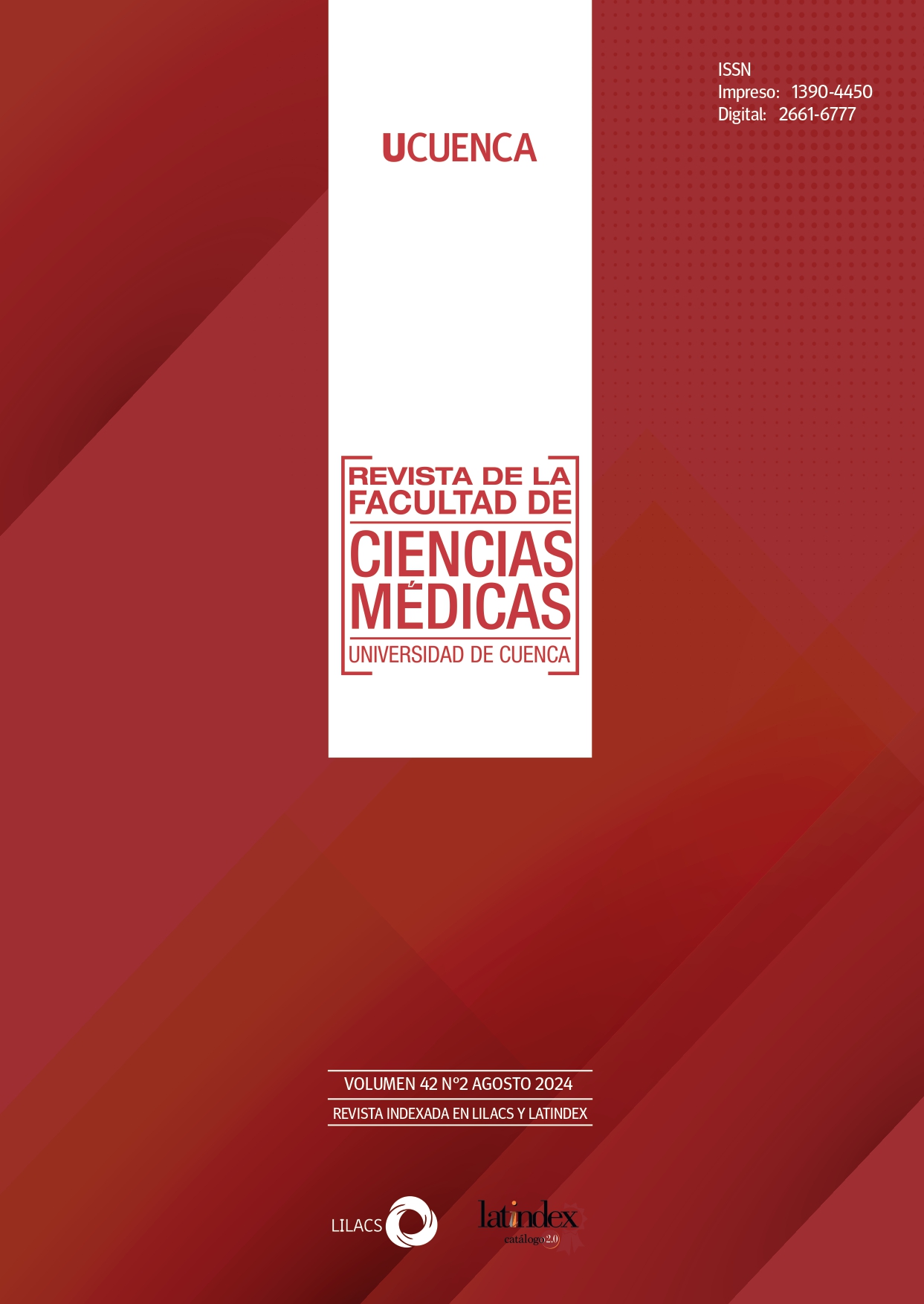Asociación entre índice neutrófilos/linfocitos y mortalidad en pacientes con COVID-19 severo
DOI:
https://doi.org/10.18537/RFCM/42.02.03Palabras clave:
COVID-19, índice de severidad de la enfermedad, neutrófilos, registros de mortalidadResumen
Introducción: el COVID-19, causado por el virus SARS-CoV-2, puede provocar enfermedades respiratorias que varían de leves a severas. Dada su alta prevalencia, es crucial identificar predictores de severidad, como el Índice Neutrófilos/Linfocitos (INL), que se obtiene fácilmente mediante una biometría hemática.
Objetivo: evaluar la asociación entre el Índice Neutrófilos/ Linfocitos y la mortalidad en pacientes con COVID-19 severo.
Metodología: estudio observacional de cohortes con una muestra de 324 pacientes diagnosticados con COVID-19 confirmado por PCR. Los datos fueron obtenidos de los registros clínicos de pacientes con COVID-19 severo ingresados en el Hospital “Pablo Arturo Suárez” durante el período de 2021 a 2022. Se analizaron las variables de sexo, edad e Índice Neutrófilos/Linfocitos. Se realizó un análisis descriptivo y se utilizó la prueba de Chi cuadrado (χ²) para establecer asociaciones entre variables. La regresión logística se utilizó para evaluar la variabilidad del INL y su relación con la
mortalidad, empleando el programa estadístico JASP versión 0.17.2.1.
Resultados: se estudiaron a 95 mujeres (29,3 %) y 229 hombres (70,7 %), con una edad promedio de 50,48 años. Las comorbilidades más frecuentes fueron hipertensión arterial (15,1 %) y arritmias cardíacas (3,4 %). La vari-
ación del INL no mostró relación significativa con el sexo (p = 0,107) ni con la edad (p = 0,162). Un INL bajo se asoció con la supervivencia, mientras que un INL elevado se vinculó con la mortalidad (p < 0,001). La tasa de mortalidad por COVID-19 fue del 39,8%.
Conclusiones: los pacientes con COVID-19 severo fueron predominantemente hombres mayores de 50 años. Un incremento en el INL se asoció significativamente con la mortalidad. La presencia de comorbilidades no mostró una relación importante con la variación del INL.
Descargas
Publicado
Número
Sección
Licencia
Derechos de autor 2024 Yahaira Alban, Marcelo Vintimilla, Gabriela Naranjo

Esta obra está bajo una licencia internacional Creative Commons Atribución-NoComercial-CompartirIgual 4.0.
Copyright © Autors

Usted es libre de:
 |
Compartir — compartir y redistribuir el material publicado en cualquier medio o formato. |
 |
Adaptar — combinar, transformar y construir sobre el material para cualquier propósito, incluso comercialmente. |
Bajo las siguientes condiciones:
 |
Atribución — Debe otorgar el crédito correspondiente, proporcionar un enlace a la licencia e indicar si se realizaron cambios. Puede hacerlo de cualquier manera razonable, pero de ninguna manera que sugiera que el licenciador lo respalda a usted o a su uso. |
| No comercial — No puede utilizar el material con fines comerciales. | |
| Compartir Igual— si remezcla, transforma o desarrolla el material, debe distribuir sus contribuciones bajo la misma licencia que el original. |
| Sin restricciones adicionales: no puede aplicar términos legales o medidas tecnológicas que restrinjan legalmente a otros a hacer cualquier cosa que permita la licencia. |






